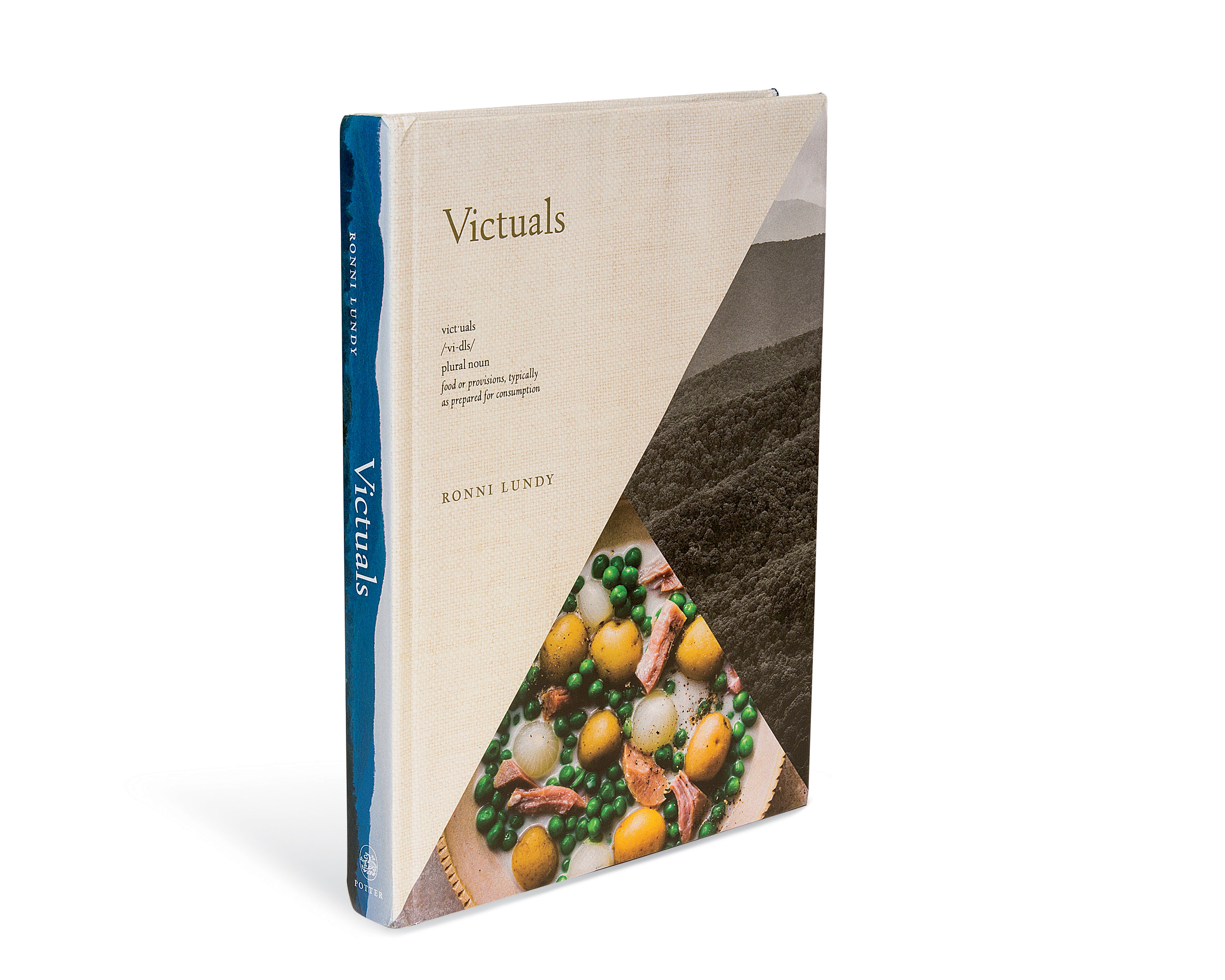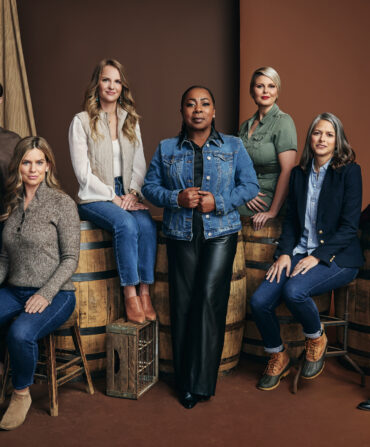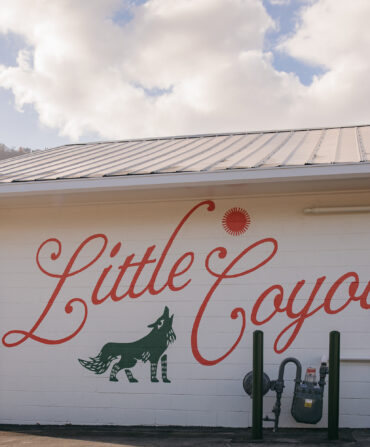Food & Drink
Salt of the Earth
From ancient times, the story of Appalachia has in many ways been the story of salt. And whether sprinkled on watermelon or in chili slathered on a hot dog bun, for the Kentucky native and foodways expert Ronni Lundy, it’s the taste of summer in the mountain South
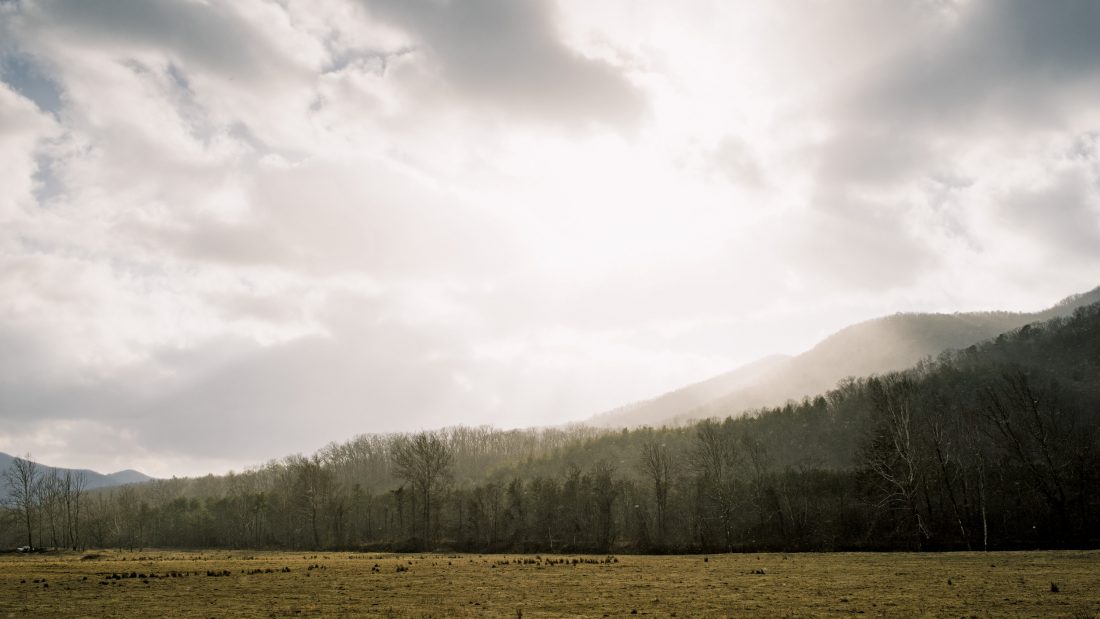
Johnny Autry
Rich Valley Road, the asphalt two-lane into Saltville, Virginia, runs through a wide valley along the base of Clinch Mountain. I slow down as much to savor the glide as for safety, and in slowing, I note what is happening roadside. The closer I get to town, the closer it seems that the small frame and brick houses sit to the road, their porches facing it.
I come from porch-sitting people, so it pleases me to see most of these are occupied. Wearing clothes that still speak of work—jeans and overalls, apron and housedress—the older folk on them have earned the right to sit idle at noonday. Even in the yard of a single-wide—flower bordered, well kept, yet porchless—three iron-haired men have arranged their lawn chairs out front in proper porch order: not clumped conversationally to face one another, but turned in a single line to the road, the better to see who is passing by. Raised in the vernacular, I don’t wave but lift two fingers from the eleven o’clock position on the steering wheel and give a short nod as I pass, receiving same in return.
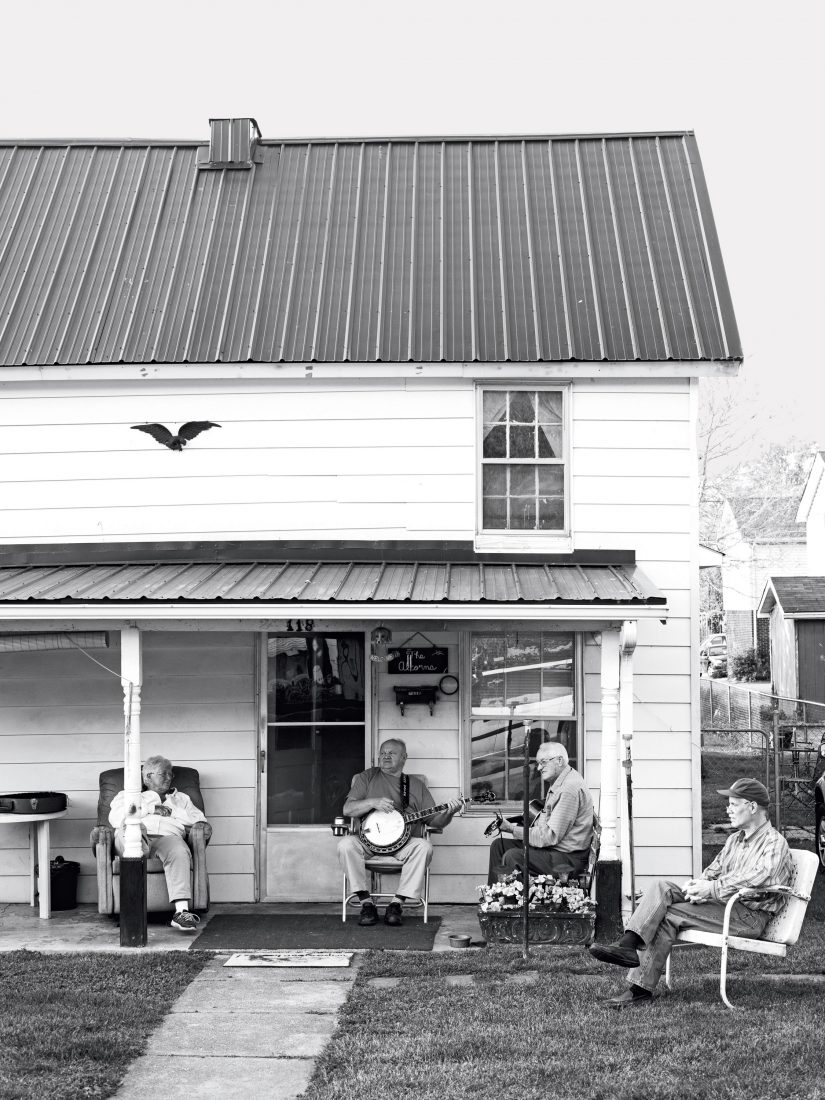
Johnny Autry
Sitting Time
A gathering on the porch in Kentucky.
While porches in this valley would have been availed of an evening, or after church on a Sunday, such midday midweek idleness would not have been common in the past. In its peak years, the salt industry in Saltville required three shifts of workers daily and provided livelihood for both town and country dwellers. And well before colonial entrepreneurs discovered a secret wealth of ancient salt deposits in the Appalachians in the 1700s, this was a lively, active place. The salt licks made a rich hunting ground for the Native Americans who came to seek the diverse game that flocked in abundance to satisfy their salt need. And before the deer, elk, and bears, the salt drew huge prehistoric beasts: mammoths, mastodons, musk oxen, the giant ground sloths whose bones have been found in local archaeological excavations.
I see the record of all of this at the Museum of the Middle Appalachians in the quiet, almost deserted downtown of Saltville. In a large, softly lit room, the huge skeleton of a woolly mammoth stands near a tabletop diorama of the town and surrounding valley.
The museum has a smaller space for rotating exhibits. When I am here, the room is full of quilts hand made by women from the town, a different sort of history told in scraps and imagination and impossibly small stitches. And in a large, sunny third room, the story of the earliest people who lived here—shown with flints and arrows, beads and feathered apparel—shares space with that of the latest. Photographs and artifacts tell the early history of a twentieth-century company town, presented with fond nostalgia by those who lived here and their descendants.
Salt sparked the first extractive industry in the southern Appalachians. Its processing required the harvesting of timber, then the excavation of coal, to keep the evaporative furnaces burning. In time, those resources were exported out as well, and that became a defining moment in the history of the region.
Salt is also a defining ingredient in the foodways of the Southern mountains. At some point in the ancient processing of carcasses in the salt/hunting regions, the flesh came in contact with the mineral and magic was born. Salt curing was the way that early hunter-gatherers prolonged the edibility of meat to get through the winter. Salt curing is what fueled the industry created by the colonists who came later to make their fortunes by shipping salt downriver to the meatpackers in Cincinnati, Louisville, Knoxville, Nashville, and as far away as New Orleans.
Is it any wonder that salt came to define many of the core foods of the region? Lip-puckering country ham and salt-cured pork. Sour corn and pickle beans. Melon served always with a sprinkle of salt. The ubiquitous cheese Nabs in the glove box that no mountain trucker leaves home without. Salty slow-simmered kale and pinto beans. Jerky, kraut, and pickles of all kinds. Salt is the compound that enabled life and nourishment through the harsh, stark winters of the mountains, winters that helped create a cuisine that was in one sense distinctly Southern and at the same time distinctly its own.
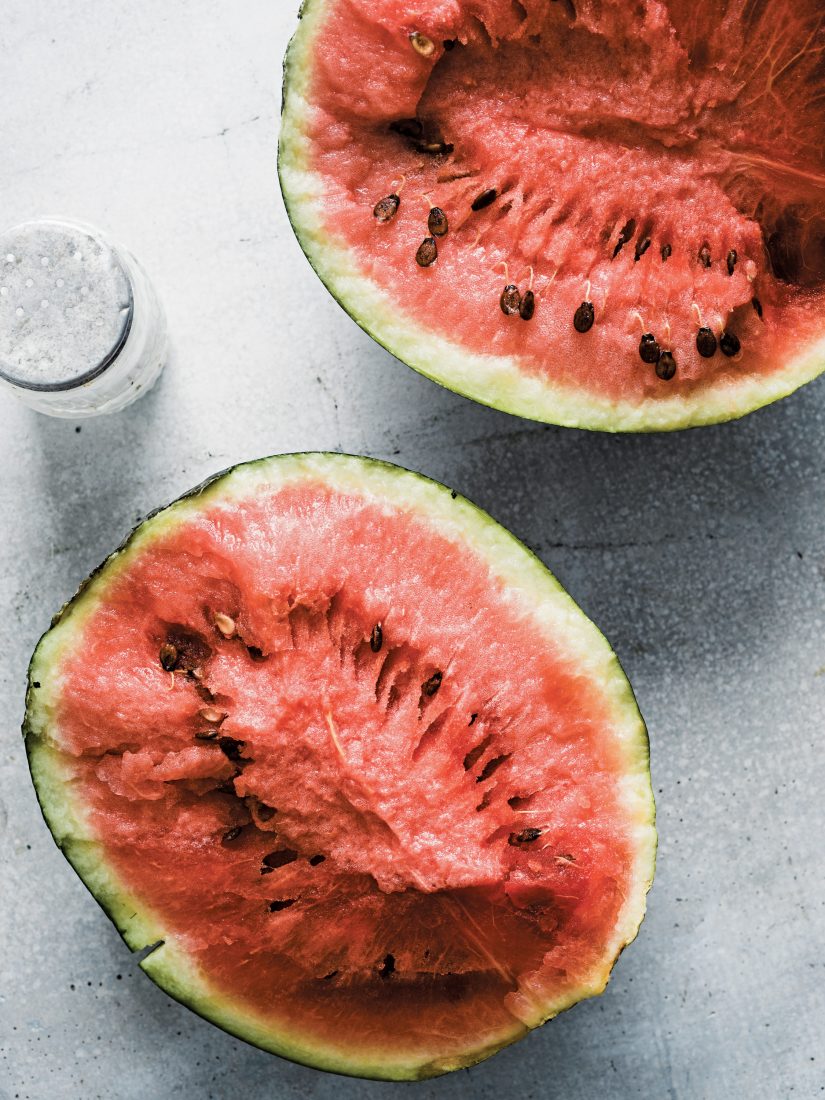
Johnny Autry
Sweet and Savory
A Southern classic: fresh watermelon served with a shaker of salt.
Much to chew on as I make my way to the museum gift shop, so no wonder that what I gravitate toward is a spiral-bound volume with a soft yellow paper cover amid the many “official” histories. It’s the Saltville Centennial Cookbook. I am most intrigued by the evocative names of the more savory, salt-laced dishes, and the stories they conjure up: Dead Man’s Soup, Bert’s (Big Mama’s) Cat Head Biscuits, Brain Croquettes, Parsnip Skillet, Dr. Finne’s Baked Doves, Hungarian Soup (Hunky Soup), Paprika’s [sic] Csirke (Chicken), Hunter’s Goulash, Chicken and Dumplings (two versions), Heirloom Scalded Lettuce, Old Fashioned Hash. Clearly there is history here as well. Delightfully, the children, grandchildren, and friends tell a good bit of that history, as this cookbook is studded with old black-and-white photographs and laced with memories of the women, and a few men, who turned these dishes out, day after day.
“There are few people in the Town of Saltville who have never eaten any of Granny Blackwell’s cooking,” I read.
“After retiring from Olin with 42 years of service, Ralph enjoyed fishing as often as possible.”
“She was a generous person and worried over people who were in need. She liked to travel and ride the bus.”
Such fragments remind me of summer evenings as a child. Lying on the grass down in Corbin, Kentucky, with my cousins, lightning bugs flashing in the dark around us, we caught such pieces of the conversation my parents, aunts, and uncles were having on the porch above. From them we formed imagined pictures and stories of the past, our people
We were all—my father, mother, sister, me—born in Corbin. But when I was about a year old and my sister twelve, my father got word of work in the distilleries in Louisville and we moved. My parents lived in the city the rest of their lives, but they never fully left the mountains. Like most members of the various hillbilly diasporas of the twentieth century, we went “up home” whenever we could. My father worked in the boiler rooms, as a fireman and oiler, hard labor but it suited his athlete’s need for a physical challenge. (He’d been a boxer as a young man. The folks in Corbin said he’d been a good one.)
He worked swing shift, and “on call,” and picked up overtime when he could to compensate for the layoffs that were a part of the distillery process then. Whenever a stretch of more than two days off came up, we’d make the four-hour winding drive to “see the folks.” We spent every summer vacation of my growing up in those hills. The steeper and more winding the road became, the easier my father seemed to sit in his skin, to smile from someplace deep.
Summers up home were not lazy. There was always a little time on the lake for reading and cards, swimming and fishing, but there were also things to do, and my parents were always willing to do them. My mother cooked with her aunts for the passels of cousins who showed up every night to visit and remember. She helped with the canning, strung beans and then threaded them up for shuck beans, cleaned and mopped and hung out wet clothes just as she did at home.
My dad loved any job that required muscle and took him outside. One summer he and my great-uncle Charlie built a garage from the foundation up, the sound of boards slapping and the two men talking and laughing riding like a melody over the rhythm of the locusts. They would come in the house still telling a story, riffing back and forth like jazz hipsters as they got tall iced tea tumblers from the cabinet and filled them with springwater that came from the faucet. As they turned to go back out, my dad would grab the saltshaker from the table and pour some in his palm and some in Charlie’s, licking it up on his way out the door. “A man needs to keep his minerals balanced,” he told me when I asked why. “Work in the summer, you sweat ’em out.” Salt and springwater: hillbilly Gatorade.
We sweated too, children playing hard or doing chores, women working in the steaming kitchen. Maybe that’s why I remember salt so clearly as the taste of summer. We put it on our fresh cucumbers and onions. We consumed it ravenously on crisp crackers topped with tangy bologna or Vienna sausages on the deck of the pontoon boat at the lake. My cousins and I poured tiny mountains in our palms and dipped tommy-toes, still warm from the garden, before dropping them into our mouths. My great-aunt Johnnie kept a saltshaker next to her as she sat on the porch slicing tart June apples to dry, for use that winter in stack cake and fried pies. The drying sweetened them, she told me, and I knew that to be true. So did salt, she said, as she sprinkled some on a crisp sour slice and popped it in her mouth, then made one for me. I wasn’t so sure about that, but there was a mingling of flavor there that was both sharp and haunting.
Even dessert in the summer needed some salt. After supper I’d ride into town with Daddy and Charlie to a grocery store that stayed open late, it seemed just to sell the dark green melons they kept in the back in long tin tubs filled with ice water. We rushed home to slice the melon while it was still deep chilled, perfect half-moons of vermilion laid on yellowed plates with sweet flowers and tiny age veins around the edges. Nobody plunged in until the saltshaker made the rounds.
My cousin David ate cinnamon Red Hots on saltine crackers; we poured salted peanuts into our glass-bottled Cokes. Even ice cream, that pure sweet blend of milk and sugar, required salt. Not in it, but in the old crank freezer that Charlie and my dad would take turns turning. The ice had to be crushed just right, then layered with a handful of rock salt. Inevitably in the process, one of the women would caution, “Don’t let that salt get high enough to seep into the cream,” and then someone would tell the story of the time that happened. And then another story, and another one, as we sat patiently on the screened back porch and waited for the cream to ripen.
When these visits ended—summer vacations, long weekends—there would be a sadness in the leaving. Tears—salt again—were shed by the women and children. The men cleared throats, mopped sweaty foreheads with handkerchiefs that just managed to slip by their eyes. Someone would say, “Going back to the salt mines, Pap?” My dad would laugh and we’d drive away.
I don’t know where my child’s image of “the salt mines” came from. A cartoon? A book I’d read? In my imagination, they were far, far away, part of an exotic desert world of swirling sand and spices. I did not know then that salt had been “mined” just one county over from Corbin.
In the 1790s, the first saltworks in Clay County, Kentucky, were started on Goose Creek. In 1807 the town of Manchester was founded there and the full-scale production of salt began. The industry peaked from 1835 to 1845 but continued for some time after. In 1862 the Union army’s leadership ordered all saltworks there destroyed to undermine the food supply of the Confederacy, even though their esteemed officer Brigadier General T. T. Garrard owned one of the biggest.
Three years later, in 1865, my paternal grandfather, David Franklin Lundy, was born. Clay County was not a peaceful place then, and that was true before the war and after. Violent feuds mark its history, but unlike the stereotypical stories of mountain feuds over moonshine or marriages gone wrong or cows gone astray, these were wars fueled by the ambitions of the wealthy entrepreneurs who owned the salt mines and dictated the lives of those who worked in them. Battles began as soon as the saltworks were established, and bad feelings and violence generated from them continued through the Civil War and on, as late as the 1930s.
Blood. Sweat. Tears. Salt is essential to each; each is a part of salt’s story.


